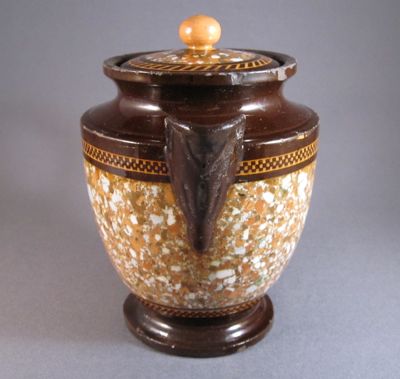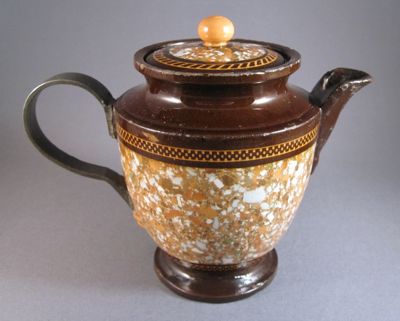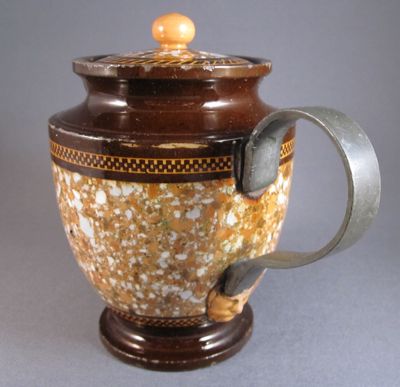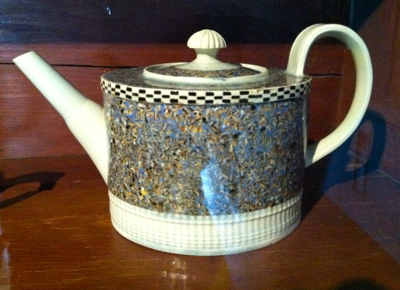This handsome redware urn-shaped teapot was made in England in the late 18th century and stands 4-1/2″ tall. Its confetti-like agate surface decoration is inlaid with ochre, orange, brown, olive, blue, and white bits of clay. Encircling the middle is a slip-filled checkered rouletted band of pumpkin and brown. All that remains of the original handle, which must have broken off sometime in the 19th century, is a molded bearded mask terminal, set ominously askew. Growing out of its forehead is the lower part of a pewter handle, fashioned by a tinker to replace the broken original. This replacement follows the form of the simple loop-shaped original.
I found this piece in Maine a few years ago and was reminded of it during a recent trip to the Shelburne Museum in Vermont, where I spotted a teapot on display with similar agate surface decoration, shown in the last image below.
This teapot is another example of agate surface decoration, and although it differs in form and coloring, the checkerboard band decoration is similar to my collaborative whiteboard template.
Photo taken at the Shelburne Museum in Shelburne, VT.
Tags: English, metal handle, pewter, pottery







I used to own a very similar teapot. I always considered it to be early to mid 19th century but never having anything comparable against which to judge its age, who knows? I have a number of white bodied pots with what Don & I have referred to as “surface agate” decoration that I believe to be late 18th century including one that matches a marked Ralph Wood example. I’m beginning to now call this an agate veneer as more people understand this.
I feel like that character with the handle smashed into head whenever I mix wine with beer in one sitting.
Beautiful!
Beautiful! I’ve never seen one quite like this. You are educating me, for sure!
One more thing: I am so impressed by your formal analysis—such great art historical writing! Such a rare skill in today’s age. I also love that agate is such a popular material right now… a timely post for sure.